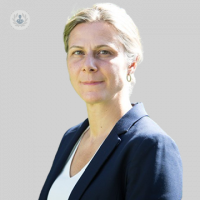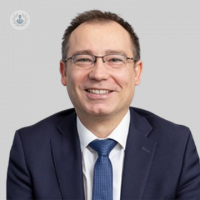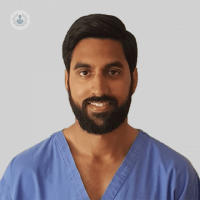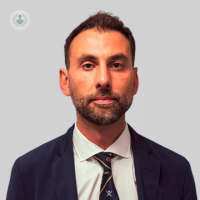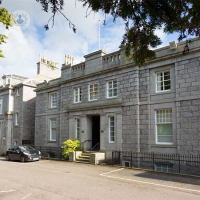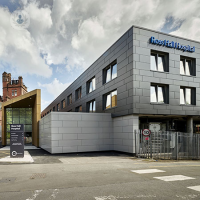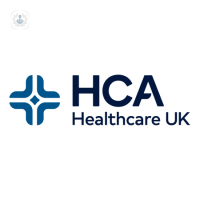What is skull base surgery?
Skull base surgery is a highly specialised branch of surgery that uses minimally invasive techniques to diagnose and treat conditions of the skull base, the top of the spine, and the underside of the brain.
Why is it done?
Skull base surgery is generally used to investigate or remove growths (both cancerous and benign) or to repair congenital malformations located around the base of the skull, including those at the top of the spine and around the bottom of the brain.
Conditions that can be treated with skull base surgery include:
- Pituitary tumours
- Meningiomas
- Chordomas
- Trigeminal neuralgia
- Vestibulocochlear nerve disorders
- Craniopharyngiomas
- Hemifacial spasms
- Craniostenosis
- Cerebro-spinal fluid fistulas
- Cerebral aneurysms
- Arteriovenous malformations (AVMs)
What does it involve?
Skull base surgery is minimally invasive – the surgeon does not have to create an opening in the skull (craniotomy). Instead, special surgical tools are inserted through the natural openings in the skull – the mouth, nose, and above the eyes. This gives skull base surgery several advantages:
- Lower risk of infection
- Lower risk of damage to the nerves and structures of the head
- Lower risk of disfigurement
- Faster recovery
Skull base surgery is a complex procedure, which requires a multi-disciplinary approach; a team of surgeons and doctors from different specialties will be involved in planning and carrying out the operation. Depending on the case, the team might be formed by an otolaryngologist, a neurosurgeon, and a radiation oncologist, with the possible additions of maxillofacial surgeons and plastic and reconstructive surgeons. Paediatric specialists also become involved if the patient is a child.
Alternatives to this treatment
Prior to the development of skull base surgery it was necessary to remove relatively large portions of the skull and/or facial musculature in order to gain entry into these areas.
Хирургия основания черепа
What is skull base surgery?
Skull base surgery is a highly specialised branch of surgery that uses minimally invasive techniques to diagnose and treat conditions of the skull base, the top of the spine, and the underside of the brain.
Why is it done?
Skull base surgery is generally used to investigate or remove growths (both cancerous and benign) or to repair congenital malformations located around the base of the skull, including those at the top of the spine and around the bottom of the brain.
Conditions that can be treated with skull base surgery include:
- Pituitary tumours
- Meningiomas
- Chordomas
- Trigeminal neuralgia
- Vestibulocochlear nerve disorders
- Craniopharyngiomas
- Hemifacial spasms
- Craniostenosis
- Cerebro-spinal fluid fistulas
- Cerebral aneurysms
- Arteriovenous malformations (AVMs)
What does it involve?
Skull base surgery is minimally invasive – the surgeon does not have to create an opening in the skull (craniotomy). Instead, special surgical tools are inserted through the natural openings in the skull – the mouth, nose, and above the eyes. This gives skull base surgery several advantages:
- Lower risk of infection
- Lower risk of damage to the nerves and structures of the head
- Lower risk of disfigurement
- Faster recovery
Skull base surgery is a complex procedure, which requires a multi-disciplinary approach; a team of surgeons and doctors from different specialties will be involved in planning and carrying out the operation. Depending on the case, the team might be formed by an otolaryngologist, a neurosurgeon, and a radiation oncologist, with the possible additions of maxillofacial surgeons and plastic and reconstructive surgeons. Paediatric specialists also become involved if the patient is a child.
Alternatives to this treatment
Prior to the development of skull base surgery it was necessary to remove relatively large portions of the skull and/or facial musculature in order to gain entry into these areas.
Врачи-специалисты в области Хирургия основания черепа

Albyn Hospital - part of Circle Health Group
Albyn Hospital - part of Circle Health Group
21 Albyn Pl, Aberdeen
No existe teléfono en el centro.
Si haces uso de este teléfono facilitado por TOP DOCTORS nos autorizas al tratamiento de tu teléfono para fines estadísticos y comerciales. Para más información, lee nuestra Политика конфиденциальности
Top Doctors

Ross Hall Hospital - part of Circle Health Group
Ross Hall Hospital - part of Circle Health Group
221 Crookston Road, Glasgow G52 3NQ
No existe teléfono en el centro.
Si haces uso de este teléfono facilitado por TOP DOCTORS nos autorizas al tratamiento de tu teléfono para fines estadísticos y comerciales. Para más información, lee nuestra Политика конфиденциальности
Top Doctors

The Harborne Hospital - part of HCA Healthcare
The Harborne Hospital - part of HCA Healthcare
Mindelsohn Way, B15 2FQ
No existe teléfono en el centro.
Si haces uso de este teléfono facilitado por TOP DOCTORS nos autorizas al tratamiento de tu teléfono para fines estadísticos y comerciales. Para más información, lee nuestra Политика конфиденциальности
Top Doctors
-
Albyn Hospital - part of Circle Health Group
21 Albyn Pl, Aberdeen, AberdeenЭксперт в области :
- ортопедическая хирургия
- гастроэнтерология
- Акушерство и гинекология
- Офтальмология
- Патологии молочной железы
-
Ross Hall Hospital - part of Circle Health Group
221 Crookston Road, Glasgow G52 3NQ, GlasgowЭксперт в области :
- рак
- Кардиология
- Колоректальная хирургия
- Дерматология
- Боль в спине
- эндокринология
-
The Harborne Hospital - part of HCA Healthcare
Mindelsohn Way, B15 2FQ, BirminghamЭксперт в области :
- Гастроэнтерология
- рак
- ортопедическая хирургия
- Хирургия грудной клетки
- Диагностика при помощи визуализации
- Акушерство и гинекология
- See more
